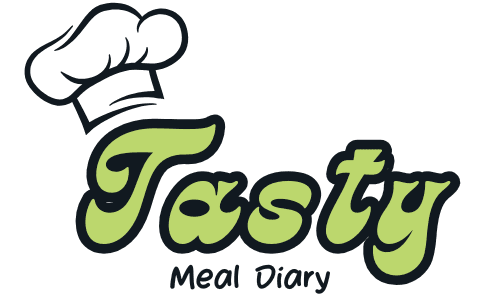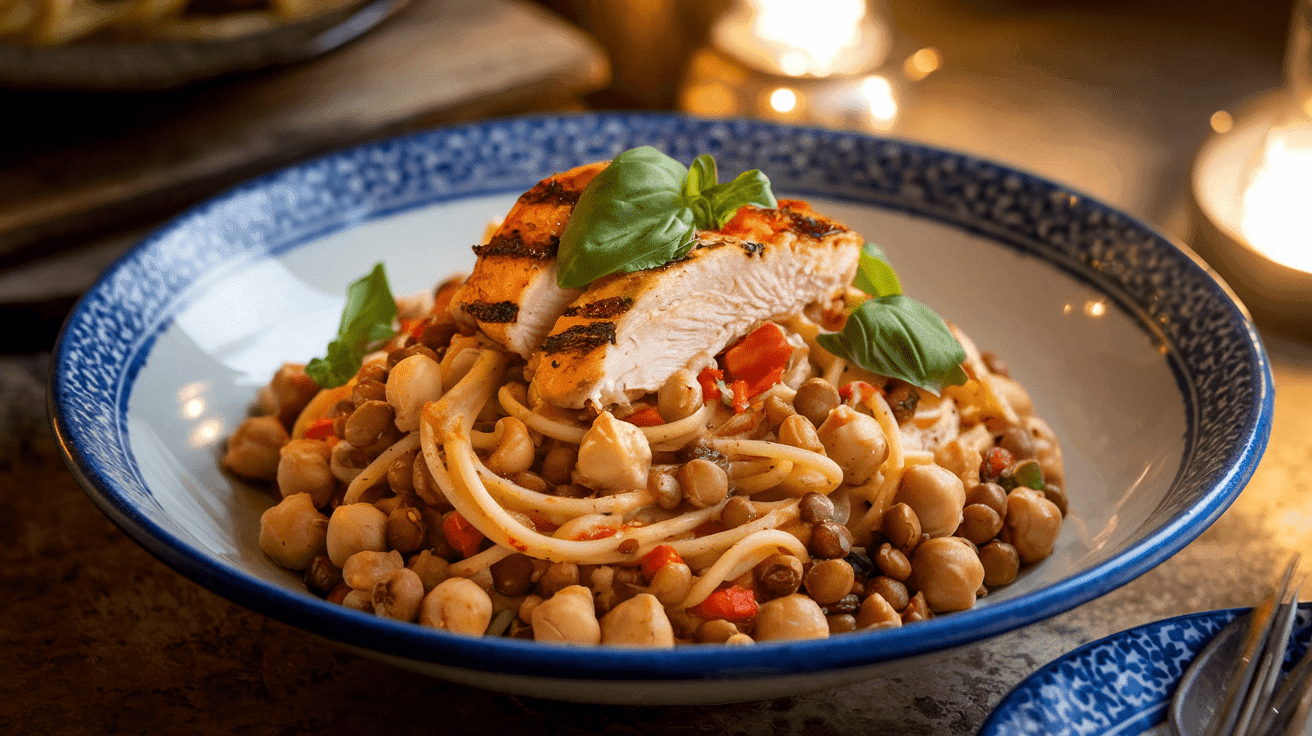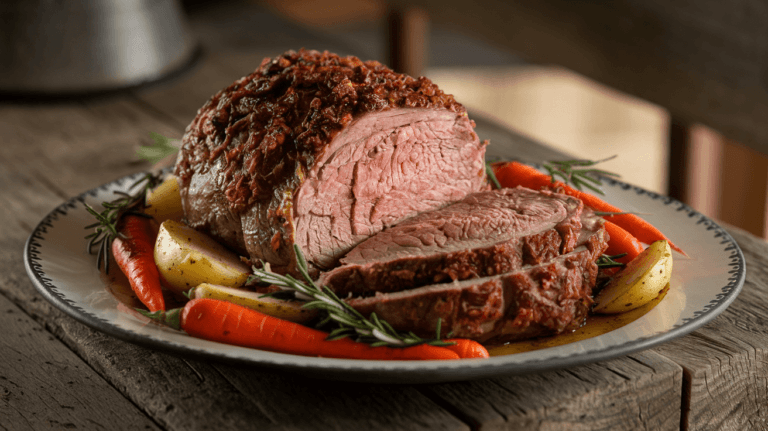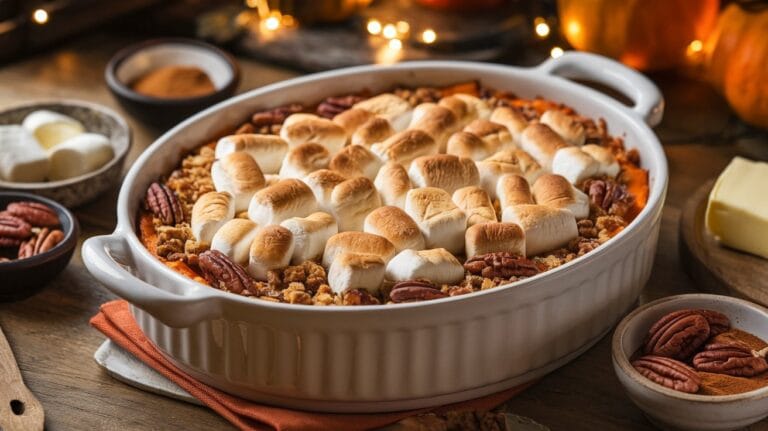Pasta lovers, rejoice! If you’re looking for a way to enjoy your favorite comfort food while still hitting your protein goals, you’ve come to the right place. Protein pasta is revolutionizing the way we eat, offering a high-protein, fiber-rich alternative to traditional wheat-based pasta. Whether you’re an athlete needing extra protein, someone following a plant-based diet, or simply searching for a healthier pasta option, there’s a perfect choice out there for you.
So, is protein pasta worth the hype? Let’s start with the basics.
Table of Contents
What Is Protein Pasta?
Definition and Overview
At its core, protein pasta is a high-protein alternative to traditional pasta, typically made from chickpeas, lentils, edamame, quinoa, or other protein-rich ingredients. Unlike regular pasta, which is primarily composed of refined wheat, these alternatives pack significantly more protein per serving, making them an excellent choice for those looking to boost their daily intake.
Some brands also fortify their pasta with added protein from pea protein, soy protein, or whey protein isolate. This means you get a nutrient-dense meal without sacrificing the comforting taste and texture of pasta.
How Protein Pasta Differs from Traditional Pasta
Wondering how protein pasta stacks up against regular pasta? Here’s a quick breakdown:
| Feature | Traditional Pasta (Per 2 oz) | Protein Pasta (Per 2 oz) |
|---|---|---|
| Protein Content | ~7g | 15-25g |
| Fiber Content | ~2g | 5-10g |
| Carbs | ~40-45g | 30-35g |
| Gluten-Free Options | Rarely | Frequently |
Not only does protein pasta offer double or even triple the protein, but it also provides more fiber and fewer refined carbs, making it a more balanced choice for your diet.
Why It’s Gaining Popularity
The rise of protein pasta isn’t just a trend—it’s a response to changing dietary needs. Here’s why it’s becoming a staple in health-conscious kitchens:
✅ Ideal for muscle building – With 15-25g of protein per serving, it’s a great way to fuel muscle recovery after a workout.
✅ Better for digestion – Many varieties are packed with fiber, which promotes gut health and keeps you fuller for longer.
✅ Gluten-free & plant-based options – People with gluten sensitivities or those following a vegan diet now have more choices.
✅ Great for weight loss & low-carb diets – Protein pasta helps curb cravings while keeping you satisfied.
With so many benefits, it’s no surprise that protein pasta is taking over grocery store shelves and dinner tables alike.
Up next, let’s explore the health benefits of adding protein pasta to your diet! 🍝
Health Benefits of Protein Pasta
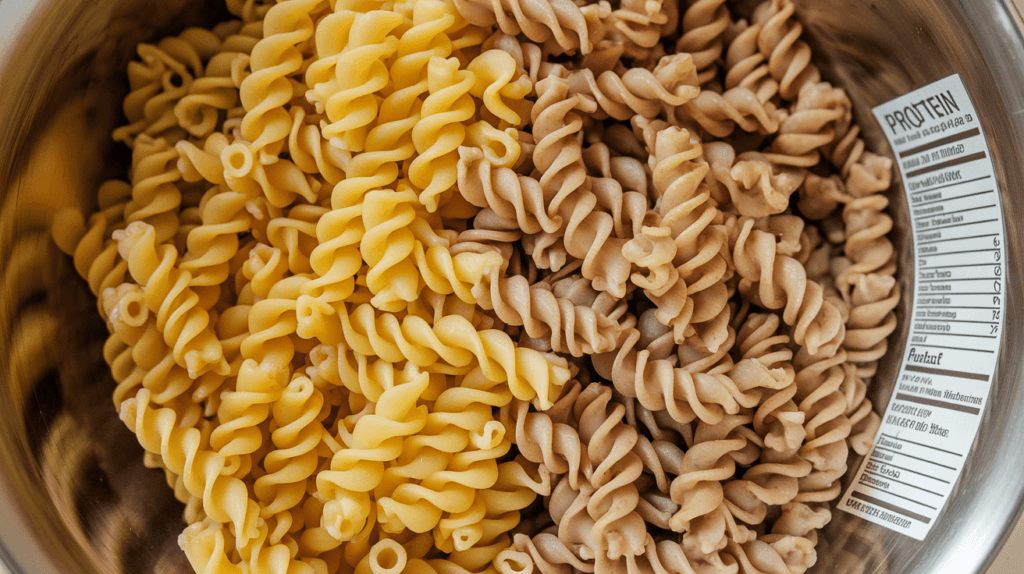
High Protein Content for Muscle Growth
If you’re aiming to build muscle, protein pasta is a game-changer. Unlike traditional pasta, which provides around 7 grams of protein per serving, some high-protein varieties offer 15-25 grams per serving. That’s nearly three times the protein! Whether you’re an athlete, a gym-goer, or just looking to stay strong as you age, getting enough protein is crucial for muscle repair, recovery, and growth.
Pairing protein pasta with lean meats like grilled chicken or shrimp, or plant-based sources like tofu and beans, can create a muscle-boosting meal that keeps you energized for hours.
Fiber-Rich Options for Better Digestion
Many protein pasta varieties, especially those made from chickpeas, lentils, or edamame, are also packed with fiber. Unlike traditional pasta, which contains little to no fiber, high-protein options provide anywhere from 5 to 13 grams per serving.
Why does this matter? Fiber plays a key role in gut health, digestion, and weight management. It helps:
✔️ Regulate blood sugar levels by slowing digestion
✔️ Keep you full longer, reducing cravings
✔️ Support a healthy gut microbiome, improving digestion
Gluten-Free and Plant-Based Choices
For those following a gluten-free or plant-based diet, protein pasta offers a delicious solution. Many options are made from beans, lentils, or quinoa, making them naturally gluten-free. That means no bloating or digestive discomfort for those with gluten sensitivities!
Plant-based eaters also benefit from these alternatives, as they provide a complete source of protein when paired with other whole foods like nuts, seeds, and vegetables.
Low-Carb and Keto-Friendly Alternatives
Watching your carb intake? Some protein pasta brands cater to low-carb and keto dieters by offering lower net carbs and higher fiber content. These options help keep blood sugar levels steady while still satisfying your pasta cravings.
For an extra low-carb meal, pair your protein pasta with a creamy avocado sauce or a hearty bolognese made with lean ground beef.
Best Protein Pasta Brands
Top-Rated Protein Pasta Brands in 2025
The pasta aisle is now packed with high-protein pasta brands, but not all are created equal. Based on expert reviews and taste tests, here are some of the top-rated protein pasta brands you should try:
🥇 Best Overall: Barilla Protein+ – Made with chickpeas and lentils, offering 10g of protein per serving. Tastes closest to regular pasta!
🥈 Best Budget Option: Banza Chickpea Pasta – A great value, with 23g of protein per serving and a slight nutty flavor.
🥉 Highest Protein Content: Explore Edamame Spaghetti – A powerhouse with 24g of protein per serving and a mild, slightly earthy taste.
Taste and Texture Comparison
The biggest concern with protein pasta? Taste and texture. Some options can be gritty, chewy, or even mushy if overcooked. Here’s how they compare:
- Chickpea & lentil pasta – Creamier texture, slightly nutty taste.
- Edamame & black bean pasta – Firm, slightly chewy, with a mild bean flavor.
- Quinoa & whole wheat blends – Closest to regular pasta in both texture and taste.
If you’re new to protein pasta, start with chickpea or lentil-based options, as they tend to have a milder taste and better texture.
How to Cook Protein Pasta for the Best Taste
Cooking Tips to Avoid Mushy or Gritty Texture
Cooking protein pasta isn’t quite the same as boiling traditional pasta. Because it’s often made from chickpeas, lentils, or edamame, it can turn mushy or gritty if overcooked. Follow these simple tips to get the perfect texture every time:
✔️ Use slightly less water – Protein pasta absorbs water differently, so too much can make it soft and soggy.
✔️ Stir frequently – This prevents sticking and ensures even cooking.
✔️ Cook al dente – Most protein pasta takes 6-9 minutes to cook. Test a piece a minute before the package suggests to avoid overcooking.
✔️ Rinse lightly (only for bean-based pasta) – Some bean-based pastas have excess starch, so a quick rinse can improve texture.
Pairing Protein Pasta with the Right Sauces
The best sauce depends on the type of protein pasta you’re using. Since they have distinct flavors, pairing them correctly can enhance the taste:
🥦 Chickpea & lentil pasta – Pairs well with tomato-based sauces, pesto, or creamy Alfredo.
🍜 Edamame & black bean pasta – Best with Asian-inspired sauces like soy-ginger or peanut sauce.
🍅 Quinoa & whole wheat pasta – Works great with classic marinara, bolognese, or garlic butter.
For an easy, high-protein meal, try tossing grilled chicken, shrimp, or tofu into your pasta dish!
Best Cooking Methods for Different Protein Pasta Types
Each type of protein pasta cooks slightly differently. Here’s a quick guide to getting it just right:
Baking: Works best with chickpea or lentil pasta in casseroles like baked ziti or lasagna.
Boiling: The standard method, but keep a close eye on the texture.
One-pot cooking: Great for soups and stews—protein pasta absorbs flavors well!
20 High-Protein Pasta Recipes to Try
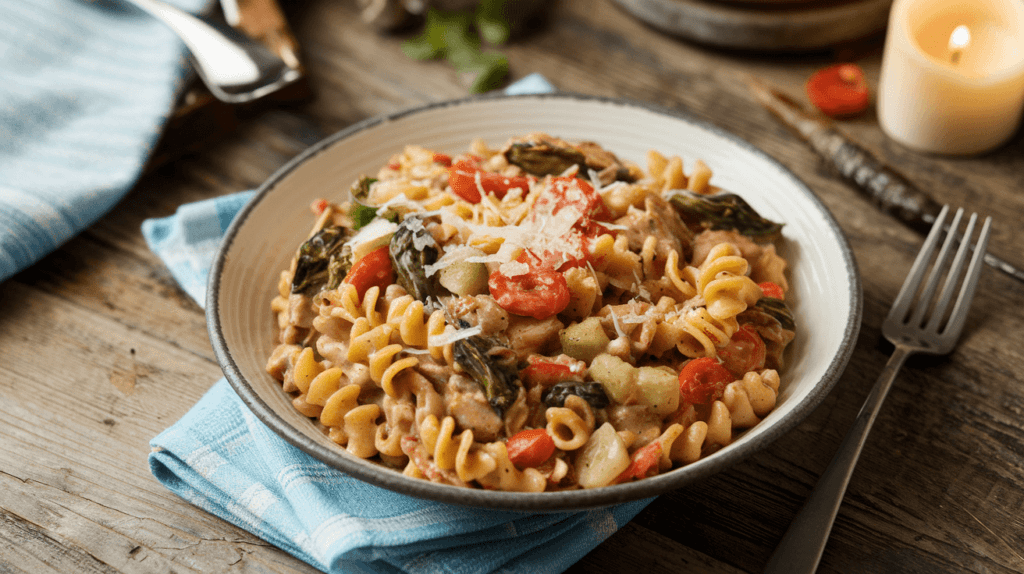
Quick and Easy High-Protein Pasta Recipes
If you’re short on time but still want a protein-packed meal, these quick and easy pasta recipes are lifesavers:
🔥 Buffalo Chicken Mac & Cheese – Spicy, creamy, and loaded with lean protein.
🌿 One-Pot Chicken Parmesan Pasta – A classic comfort dish with a healthy twist.
🍲 Lentil Bolognese – A hearty, plant-based version of the Italian classic.
Vegan and Vegetarian Protein Pasta Recipes
For plant-based eaters, these protein pasta recipes are both nutritious and delicious:
🥦 Mushroom Soup Pasta – Rich, creamy, and packed with fiber and protein.
🍅 Italian Vegetable Soup with Lentil Pasta – A nourishing, protein-rich soup perfect for meal prep.
🌿 Pesto Chickpea Pasta – A light yet filling dish with basil, garlic, and a touch of lemon.
Meal Prep and Weight Loss-Friendly Recipes
These high-protein, low-calorie pasta dishes keep you full without excess carbs:
💪 Zucchini & Lentil Pasta Primavera – Fresh veggies, a zesty sauce, and high protein pasta make this a winner.
🔥 Spicy Shrimp & Edamame Pasta – A metabolism-boosting dish packed with lean protein.
🥗 Avocado & Spinach Protein Pasta Salad – A refreshing, fiber-rich option perfect for weight loss.
For more delicious recipe ideas, check out the Chicken Pasta Recipes & Tips on Tasty Meal Diary!
Where to Buy Protein Pasta and How to Choose the Best One
Best Online and Retail Stores for Protein Pasta
Finding protein pasta is easier than ever! Whether you prefer shopping in-store or online, there are plenty of places to buy high-protein pasta options:
🛒 Local Grocery Stores: Major supermarkets like Walmart, Target, and Whole Foods carry popular brands such as Banza Chickpea Pasta and Barilla Protein+.
📦 Online Retailers: Amazon, Thrive Market, and Vitacost offer bulk deals, variety packs, and sometimes lower prices than physical stores.
🌱 Health Food Stores: Specialty markets like Trader Joe’s and Sprouts stock organic and plant-based protein pasta options, including quinoa and edamame-based varieties.
For the best deals, compare prices across different stores and look for discounts, coupons, or subscription savings.
Reading Nutrition Labels: What to Look for
Not all protein pasta is created equal! Before adding one to your cart, check the nutrition label for these key details:
✅ Protein Content: Aim for at least 15 grams per serving to maximize benefits.
✅ Fiber: Higher fiber (5-10g per serving) keeps you fuller longer and supports digestion.
✅ Ingredient List: Look for simple, whole ingredients like chickpeas, lentils, or quinoa. Avoid highly processed additives.
✅ Net Carbs: If you’re watching your carb intake, choose a pasta with lower net carbs and higher fiber.
FAQs
Is protein pasta actually healthy?
Yes! Protein pasta is a healthier alternative to regular pasta because it contains more protein, fiber, and essential nutrients. It helps support muscle growth, improve digestion, and keep you full longer. However, always check the label for added ingredients and choose options made from whole, natural sources.
Which protein pasta brand has the highest protein content?
The highest protein pasta options include:
🔥 Explore Cuisine Edamame Spaghetti – 24g of protein per serving
🔥 Tolerant Organic Red Lentil Pasta – 22g of protein per serving
🔥 Banza Chickpea Pasta – 23g of protein per serving
These brands offer significantly more protein than traditional wheat pasta, making them great choices for those looking to boost their protein intake.
Can I eat protein pasta on a keto diet?
Most protein pasta varieties contain too many carbs for a strict keto diet. However, some brands offer low-carb alternatives made from high-fiber ingredients like black soybeans or shirataki noodles. If you’re on a moderate low-carb diet, options like edamame pasta or chickpea pasta may work in smaller portions.
What are the best sauces to pair with protein pasta?
Pairing the right sauce with your protein pasta enhances both taste and texture. Here are the best combinations:
🍅 Chickpea & Lentil Pasta: Works well with marinara, pesto, or creamy Alfredo.
🌿 Edamame & Black Bean Pasta: Pairs best with Asian-style sauces like soy-ginger or peanut sauce.
🧄 Quinoa & Whole Wheat Pasta: Complements garlic butter, Bolognese, or olive oil-based sauces.
Common Mistakes to Avoid
Overcooking the Pasta
One of the biggest mistakes people make with protein pasta is overcooking it. Unlike traditional wheat pasta, protein pasta especially those made from chickpeas, lentils, or edamame can quickly become mushy and fall apart if left in boiling water for too long.
🕒 Solution: Always follow the cooking instructions on the package, but start checking for doneness at least a minute earlier. Aim for an al dente texture, which is firm but not hard.
Not Salting the Water Enough
Because protein pasta is made from beans or legumes, it has a slightly earthy or nutty taste. One simple trick to improve the flavor? Salt the water generously!
🧂 Solution: Add about one tablespoon of salt per gallon of water before boiling your protein pasta. This enhances the flavor and helps the pasta absorb seasoning better.
Skipping the Rinse (or Rinsing Too Much)
Should you rinse protein pasta after cooking? The answer depends on the type:
🚫 Don’t rinse if you’re using chickpea, lentil, or whole wheat pasta—rinsing removes surface starch, which helps sauces cling better.
✅ Rinse lightly if you’re cooking edamame or black bean pasta to reduce excess starch and prevent stickiness.
Using the Wrong Sauce or Ingredients
Not all sauces work well with protein pasta. Some high-protein pastas have a stronger flavor than regular pasta, so pairing them with light or bland sauces can leave the dish tasting off.
🍅 Solution: Use bold, flavorful sauces like marinara, pesto, or garlic butter to balance the natural taste of protein pasta. Adding grilled chicken, tofu, or roasted veggies also enhances the flavor and texture.
Is Protein Pasta Worth It?
So, after all this, is protein pasta actually worth adding to your diet? Let’s break it down.
The Pros of Protein Pasta
✅ High in Protein – Most brands offer 2-3x more protein than regular pasta.
✅ More Fiber = Better Digestion – Helps you stay full longer and improves gut health.
✅ Gluten-Free & Plant-Based Options – Perfect for those with dietary restrictions.
✅ Great for Fitness & Weight Loss – Supports muscle growth and weight management.
The Cons of Protein Pasta
❌ Can Be More Expensive – Some brands cost twice as much as traditional pasta.
❌ Texture Can Be Different – If overcooked, it can become soft or grainy.
❌ Taste Varies by Brand – Some options have a stronger bean flavor than others.
Final Verdict: Should You Try Protein Pasta?
Absolutely! If you want a healthier, more nutritious alternative to traditional pasta, protein pasta is a great option. It’s perfect for athletes, weight-conscious eaters, and those following a plant-based or gluten-free diet.
However, if you’re a pasta purist and love the exact taste and texture of wheat pasta, it may take some trial and error to find a protein pasta brand that works for you.
At the end of the day, it’s all about balance mix protein pasta into your meals when you need a protein boost, and enjoy traditional pasta when you’re craving that classic taste.
If you’re looking for more tasty recipes, check out our collection of delicious meal ideas!
